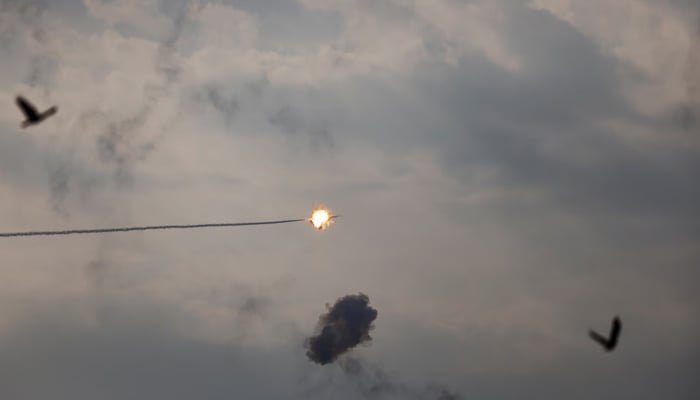Amidst a recent and dangerous escalation of direct strikes between Israel and Iran, the effectiveness of Israel’s air defense systems is being heavily scrutinized, as reported by *Al Jazeera*. These systems, crucial for intercepting the waves of Iranian missiles aimed at Israeli targets, have shown both strengths and weaknesses in the face of the attacks.
The tit-for-tat attacks intensified over the weekend, raising concerns about a wider conflict. This followed Israel’s earlier strikes against Iran, including an attack on a major gas field. In response, Iran suspended nuclear talks, which the US had seen as vital to preventing further Israeli strikes. Israeli Prime Minister Benjamin Netanyahu downplayed the initial attacks, hinting at potentially more severe responses in the future. Meanwhile, Iran’s Revolutionary Guards have threatened even “heavier” and “more extensive” strikes if Israel continues its aggression.
Both sides have reportedly targeted key defense, energy, nuclear, and oil infrastructure, as well as civilian properties, with missile strikes. Reports indicate significant casualties, including the deaths of Iranian nuclear scientists, military leaders, and members of the Revolutionary Guard. Israeli air defenses also sustained damage. While Iran launched multiple missile barrages against Israeli cities, only some hit their targets, resulting in a reported 8 fatalities. The scale of the attack is said to have strained Israel’s Iron Dome defenses.
With analysts predicting a potentially lengthy conflict between the two nations, it’s important to examine Israel’s air defense capabilities in more detail.
The cornerstone of Israel’s defense is the Iron Dome system, which utilizes radar to detect incoming projectiles, analyzing their speed and trajectory. The control center determines if a projectile poses a threat to populated areas, and if so, the missile-firing unit launches interceptor missiles to neutralize it. Each launcher carries 20 interceptor missiles, and ten Iron Dome batteries are strategically positioned throughout Israel.
Beyond the Iron Dome, Israel employs other systems to counter medium- and long-range threats. David’s Sling is designed to intercept missiles with a range of 40 to 300 kilometers (25 to 186 miles), while the Arrow system can intercept missiles traveling up to 2,400 kilometers (1,491 miles).
Here’s a breakdown of the key features of each system:
**Iron Dome**
* **Range:** Short range, 4km to 70km.
* **Purpose:** Intercept short-range rockets and artillery.
* **Components:** Tamir interceptor missiles and launcher, radar, control system.
**David’s Sling**
* **Range:** Medium range, 40km to 300km.
* **Purpose:** Intercept short-range ballistic missiles, large calibre rockets and cruise missiles.
* **Components:** Stunner interceptor missiles and a vertical firing unit, radar, operation station.
**Arrow System**
* **Range:** Long range, Up to 2,400km.
* **Purpose:** Intercept medium-range ballistic missile.
* **Components:** Missiles (Arrow 2 for lower altitude and Arrow 3 for higher altitude) and launcher, control center, battle management center.
The current conflict is placing immense strain on Israel’s air defenses while simultaneously demonstrating Iran’s capabilities. As the missile exchanges continue, the effectiveness of these defense systems will be a critical factor in determining the course of the conflict.


